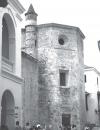Abstract
This article exposes building details of the Cathedral and the church of Santo Domingo, in the Colombian city of Cartagena de Indias. This two analyzed churches were planned the same as the beginning of the construction in the 16th century, having clear Spanish influences. Both churches preserve good part of the architectural, technical, spatial and decorative elements with those which were conceived, in spite of the passage of time and the modifications that have suffered throughout the time. Likewise, both are declared as Goods of Cultural Interest of National Character. There turns out to be specially interesting the tracking of the precedents and references, Iberian and Spanish-American, that are observed in other relatively contemporary buildings. It is also surprising to detect the early influences of architectural treatises, specially I quattro libri dell'architettura, by Andrea Palladio, published initially in Venice 1.570. The particular conditions of the city, the raw materials and the personnel in charge of the works, with their big economic and technical difficulties; marked the architecture of these two valuable buildings, conceived with big pretensions and constructed with big difficulties and a marked lack of means.Apuntes is registered under a Creative Commons Attribution 4.0 International Public License. Thus, this work may be reproduced, distributed, and publicly shared in digital format, as long as the names of the authors and Pontificia Universidad Javeriana are acknowledged. Others are allowed to quote, adapt, transform, auto-archive, republish, and create based on this material, for any purpose (even commercial ones), provided the authorship is duly acknowledged, a link to the original work is provided, and it is specified if changes have been made. Pontificia Universidad Javeriana does not hold the rights of published works and the authors are solely responsible for the contents of their works; they keep the moral, intellectual, privacy, and publicity rights.
Approving the intervention of the work (review, copy-editing, translation, layout) and the following outreach, are granted through an use license and not through an assignment of rights. This means the journal and Pontificia Universidad Javeriana cannot be held responsible for any ethical malpractice by the authors. As a consequence of the protection granted by the use license, the journal is not required to publish recantations or modify information already published, unless the errata stems from the editorial management process. Publishing contents in this journal does not generate royalties for contributors.


